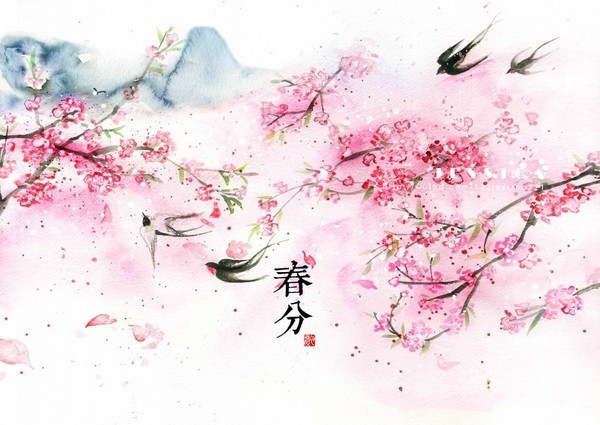Vernal equinox
cold dews
The vernal equinox is one of the 24 solar terms and the fourth solar term in spring. Douzhiren, with the sun yellow meridian reaching 0 °, is handed in on March 19-22 of the Gregorian calendar every year. The vernal equinox is of great significance in astronomy. On the day of the vernal equinox, the day and night in the northern and southern hemispheres are divided equally. Since that day, the direct position of the Sun continues to move from the equator to the northern hemisphere. The days in the northern hemisphere begin to be longer than the night, and the opposite is true in the southern hemisphere. In terms of climate, there are also obvious characteristics. Except for the Qinghai Tibet Plateau, northeast, northwest and northern North China, China has entered a bright spring.
The vernal equinox refers to the time of day and night, which is 12 hours; Second, in ancient times, spring was from the beginning of spring to the beginning of summer. The spring equinox was divided equally in the three months of spring. After the spring equinox, the climate is mild, the rain is abundant and the sun is bright. During the spring equinox, Chinese people have the customs of flying kites, eating spring vegetables, setting eggs and so on.
Meteorological definition
In practice, it usually refers to the date when the sun is really at 0 ° of the Yellow Meridian: March 20 or March 21 every year.
In terms of time period, it refers to the position of the sun between 0 ° and 15 ° of the Yellow meridian, which is about from March 20 to April 5.
The vernal equinox refers to the time of day and night, which is 12 hours; Second, the spring equinox is the equinox of spring (from the beginning of spring to the beginning of summer).
The traditional method of dividing the four seasons in China takes the “four signs” in the 24 solar terms as the starting point of the four seasons and the dichotomy and two solstices as the midpoint. For example, spring begins with the beginning of spring (Dou refers to the northeast, and the eight trigrams root position the day after tomorrow), the spring equinox (Dou refers to the East) is the midpoint, and the beginning of summer (Dou refers to the southeast) is the end
The division of four seasons in the west takes “two minutes and two solstices” as the starting point of the four seasons. For example, the spring equinox is the starting point in spring and the summer solstice is the ending point. The latitude of western countries is high and far from the intersection of yellow and red phases. Taking “two in two to” as the starting point of the four seasons can better reflect the local climate than “four standing”. In the west, the four seasons divided by “two in two to” are one and a half months later than the four seasons divided by China’s traditional “four Li”.
Fold and edit this paragraph of earth phenomenon
At the vernal equinox, the direct point of the sun is on the equator, and then the direct point of the Sun continues to move northward, so the vernal equinox is also called ascending equinox.
The equinox of day and night (see the theory of Twilight). After the spring equinox, the days are getting longer and shorter in the northern hemisphere, the nights are getting longer and shorter in the southern hemisphere.
At the spring equinox, there is no polar day or polar night in the world. After the spring equinox, the polar day begins near the north pole, and the range becomes larger and larger; Near the south pole, the polar day ends and the polar night begins, and the range becomes larger and larger
The seasonal phenomenon and temporal and spatial state of the spring equinox can be summarized as follows: “the wind and thunder send warm season. In spring, the peach willows are fresh with makeup. On the direct surface of the equator, the day and night are divided equally.”
Post time: Mar-21-2022

